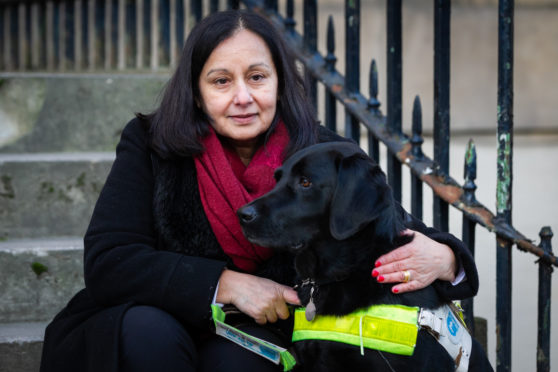
Blind people will no longer be asked to read letters from an eye chart to get a lifeline benefit.
Assessments for Personal Independence Payments (PIP) – which are carried out on behalf of the government by a private company – will also be reviewed to make them fairer to people with sight loss.
The changes come after The Sunday Post revealed the concerns of blind people, charities and politicians.
We told how MP Chris Stephens obtained figures that revealed 40% of blind and visually impaired people in Scotland were denied PIP – but when they appealed 16% of those decisions were overturned.
PIP is not means-tested but blind and visually impaired people must undergo a vigorous assessment.
The Post revealed in January that staff at Independent Assessment Services (IAS), which carries out assessments, has asked people to read letters from a wall chart, make eye contact and walk around a room – even if they are registered blind.
The process was criticised by Mr Stephens and The Royal National Institute of Blind People (RNIB) Scotland and Scottish War Blinded.
Mr Stephens took representatives from the charities to meet IAS in Glasgow on Friday.
Francis Watt, who attended the meeting, told IAS bosses he was forced to go through a difficult appeal to get PIP. He said: “The experience was very stressful, and a long, drawn-out process that took 10 months from the date I made the application.”
Mother-of-two Jamilia Shaikh, 59, said she broke down in tears during a “distressing” assessment. The test left her so stressed she walked into a wall and was almost knocked out.
IAS bosses committed to reforms during the meeting with Mr Watt, Mr Stephens and the charities.
Mr Stephens said: “It was a very good meeting from our point of view. The training model for visual impairment and sight loss will be shared with both organisations for comment and suggestions.
“There remain concerns about an ignorance of visual impairment and sight-loss issues. So there will be a point of contact for any complaints at RNIB and Scottish War Blinded.
“IAS also gave us a guarantee they will avoid carrying out eye tests because people who are assessing them don’t have the specialist knowledge to make a judgment on that.
“We are going to meet IAS again in six months to see if there is any improvement.”
Mark O’Donnell, chief executive of Royal Blind and Scottish War Blinded, said: “We are grateful to Chris Stephens MP for facilitating this helpful dialogue with IAS so we can understand why the system is not working better for people living with sight loss and to make the case for a fairer approach in the future.”
An IAS spokesman said: “We had a productive meeting where we were able to explain our role in the PIP process and how the assessment works for those with sight loss plus explore the examples raised by participants.
“We set out the steps IAS has taken to enhance the training and guidance for our health professionals and have agreed to work with RNIB Scotland and Scottish War Blinded in the spirit of continuous improvement.”

Enjoy the convenience of having The Sunday Post delivered as a digital ePaper straight to your smartphone, tablet or computer.
Subscribe for only £5.49 a month and enjoy all the benefits of the printed paper as a digital replica.
Subscribe